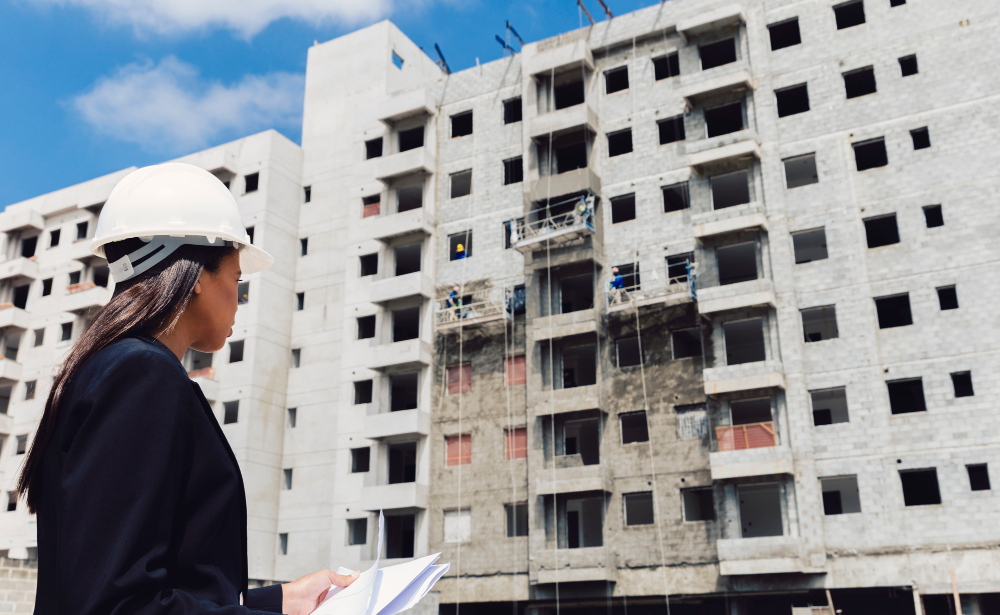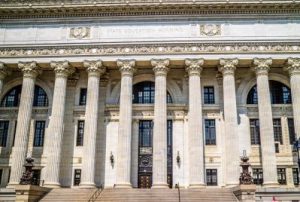Detroit, once the epicenter of the American automotive industry, has experienced a significant transformation over the past few decades. Following a period of economic downturn and urban decay, the city is now witnessing an architectural renaissance. This revival is characterized by a blend of historical preservation, innovative design, and community-focused development. In this article, we will explore the key elements that are driving this architectural resurgence, analyze its impact on the city, and compare it with similar urban revivals in other cities.
Historical Context
The Rise and Fall of Detroit
Detroit’s architectural heritage is deeply intertwined with its industrial past. In the early 20th century, the city flourished as the heart of the American automobile industry. Iconic buildings such as the Detroit Opera House, the Fox Theatre, and the Guardian Building were constructed during this golden era, showcasing the city’s wealth and cultural significance. However, the latter half of the 20th century saw a decline in manufacturing jobs, leading to economic hardship, population decline, and urban blight.
Preservation of Historical Landmarks
Despite the challenges, Detroit has managed to preserve many of its historical landmarks. Organizations like the Detroit Historical Society and preservationists have played a crucial role in safeguarding the city’s architectural legacy. The restoration of the Michigan Central Station and the redevelopment of the Packard Plant are prime examples of how historical buildings are being repurposed to serve contemporary needs.
Modern Architectural Innovations
New Construction and Design
In addition to preserving its historical buildings, Detroit is embracing modern architectural innovations. New construction projects, such as the Hudson’s Site Development and the Monroe Blocks, are reshaping the city’s skyline. These projects incorporate sustainable design principles, including green spaces, energy-efficient technologies, and mixed-use developments that cater to the needs of the local community.
Role of Architects and Urban Planners
The resurgence of Detroit’s architecture is also driven by the efforts of visionary architects and urban planners. Firms like SHoP Architects, Gensler, and local architects are at the forefront of this transformation. Their designs not only focus on aesthetics but also on creating functional spaces that promote social interaction and economic growth.
Community-Focused Development
Inclusive Urban Planning
A significant aspect of Detroit’s architectural renaissance is its focus on inclusive urban planning. Development projects are increasingly prioritizing the needs of local residents, ensuring that revitalization efforts benefit the entire community. Initiatives such as affordable housing, public transportation improvements, and community centers are integral to this approach.
Public Spaces and Green Initiatives
The creation of public spaces and green initiatives is another key element of Detroit’s architectural revival. The Detroit Riverfront, for instance, has been transformed into a vibrant public space that attracts residents and tourists alike. Additionally, projects like the Dequindre Cut Greenway provide recreational opportunities while promoting environmental sustainability.
Comparative Analysis: Detroit vs. Other Urban Revivals
Similarities with Other Cities
Detroit’s architectural renaissance shares similarities with urban revivals in other cities, such as Pittsburgh, Cleveland, and Baltimore. These cities also experienced industrial decline and have since embarked on a journey of economic and architectural renewal. Common strategies include the preservation of historical buildings, the introduction of modern design elements, and community-focused development.
Unique Aspects of Detroit’s Revival
However, Detroit’s revival has unique aspects that set it apart. The city’s deep connection to the automotive industry and its cultural heritage play a significant role in shaping its architectural identity. Additionally, the scale of Detroit’s transformation, given its size and population, presents unique challenges and opportunities that differ from those in smaller cities.
Impact on Economic and Social Fabric
Economic Growth and Job Creation
The architectural renaissance in Detroit is driving economic growth and job creation. Construction projects generate employment opportunities, while the revitalization of commercial spaces attracts businesses and investors. This economic upturn has a ripple effect, contributing to the overall prosperity of the city.
Social and Cultural Impact
Beyond economic benefits, the architectural revival is also fostering social and cultural revitalization. The restoration of historical landmarks and the creation of new public spaces enhance the city’s cultural vibrancy. These developments provide platforms for community events, artistic expressions, and cultural exchanges, enriching the social fabric of Detroit.
Challenges and Future Prospects
Addressing Gentrification Concerns
One of the primary challenges associated with Detroit’s architectural renaissance is the risk of gentrification. While revitalization efforts bring numerous benefits, they can also lead to the displacement of long-term residents and increased living costs. Balancing development with the preservation of community integrity is essential to ensure inclusive growth.
Sustaining the Momentum
Sustaining the momentum of Detroit’s architectural renaissance requires ongoing commitment from stakeholders. Continuous investment in infrastructure, innovative design, and community engagement is crucial. Collaborative efforts between government bodies, private developers, and local communities will play a pivotal role in maintaining and enhancing the city’s architectural landscape.
Analysis Table: Key Elements of Detroit’s Architectural Renaissance
| Key Element | Description | Examples |
|---|---|---|
| Historical Preservation | Restoration and repurposing of historical buildings | Michigan Central Station, Packard Plant |
| Modern Design | Incorporation of contemporary architectural practices | Hudson’s Site Development, Monroe Blocks |
| Inclusive Urban Planning | Development projects that prioritize community needs | Affordable housing, public transportation |
| Public Spaces | Creation of recreational and green areas | Detroit Riverfront, Dequindre Cut Greenway |
| Economic Impact | Job creation and business attraction | Construction projects, commercial space revitalization |
| Social and Cultural Impact | Enhancement of cultural vibrancy | Community events, artistic expressions |
Comparative Table: Detroit vs. Other Urban Revivals
| Aspect | Detroit | Pittsburgh | Cleveland | Baltimore |
|---|---|---|---|---|
| Historical Preservation | Strong focus, significant landmarks | Similar emphasis, steel industry heritage | Notable efforts, manufacturing past | Historical waterfront, industrial roots |
| Modern Design | Embraces sustainability and innovation | Similar approach, green building practices | Incorporates modern design, eco-friendly | Mix of modern and historical elements |
| Community Development | Inclusive planning, local focus | Community-oriented projects | Emphasis on resident needs | Community-centric redevelopment |
| Public Spaces | Significant green initiatives | Extensive park systems | Urban parks and greenways | Waterfront revitalization |
| Economic Growth | Construction-driven, diverse industries | Tech and education sector growth | Healthcare and tech industries | Diverse economic base, port activities |
| Unique Challenges | Scale of transformation, automotive legacy | Transition from steel, economic diversification | Post-industrial economic shift | Port city dynamics, industrial decline |
Conclusion
Detroit’s architectural renaissance is a testament to the city’s resilience and capacity for transformation. Through a combination of historical preservation, modern design, and community-focused development, Detroit is redefining its urban landscape. While challenges such as gentrification and sustaining momentum remain, the city’s commitment to inclusive and innovative growth provides a promising outlook. By learning from its past and embracing its future, Detroit is not only rebuilding its architectural heritage but also revitalizing its economic and social fabric. This renaissance serves as an inspiring model for other cities facing similar challenges, showcasing the power of architecture as a catalyst for urban renewal.












